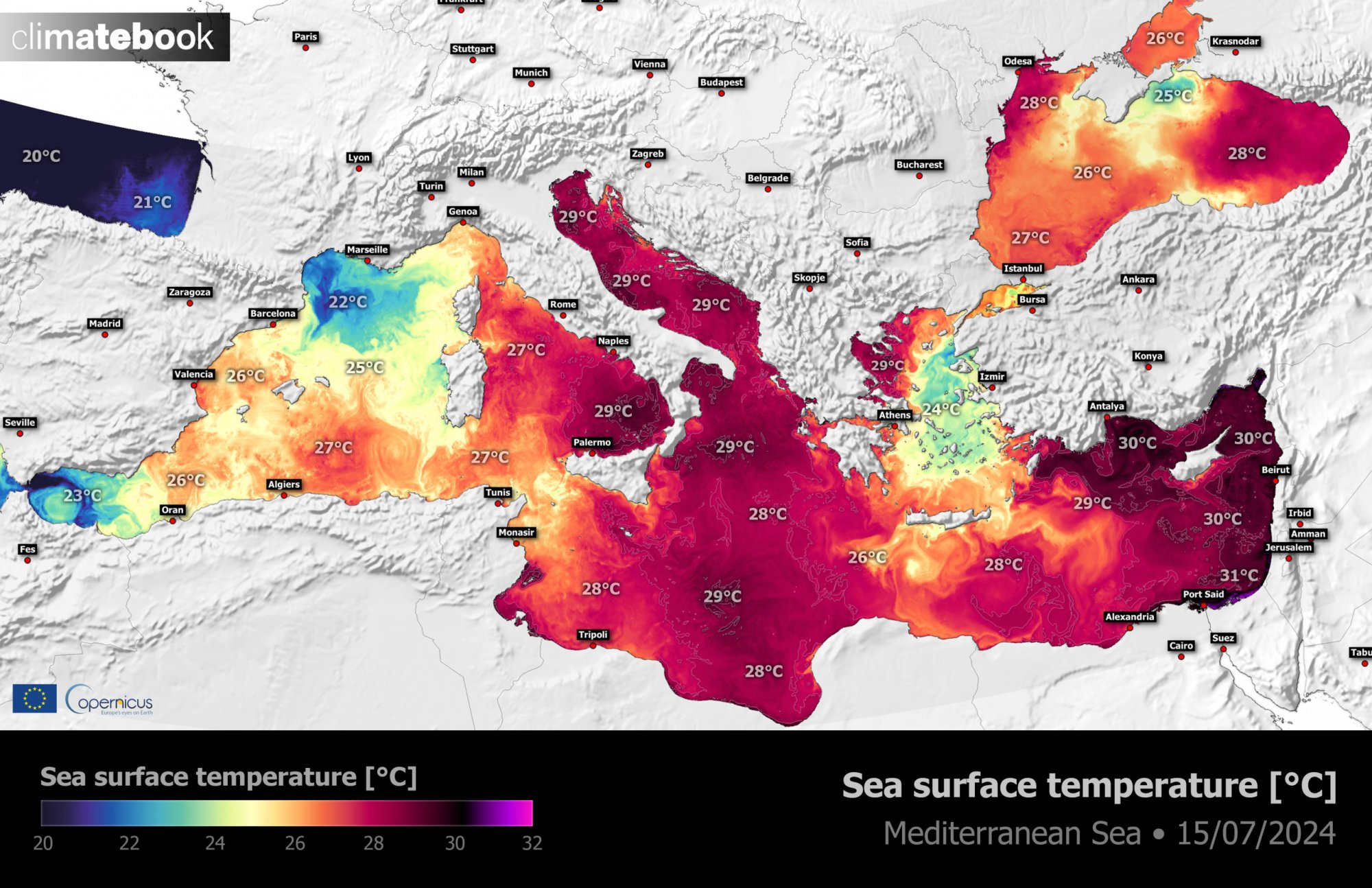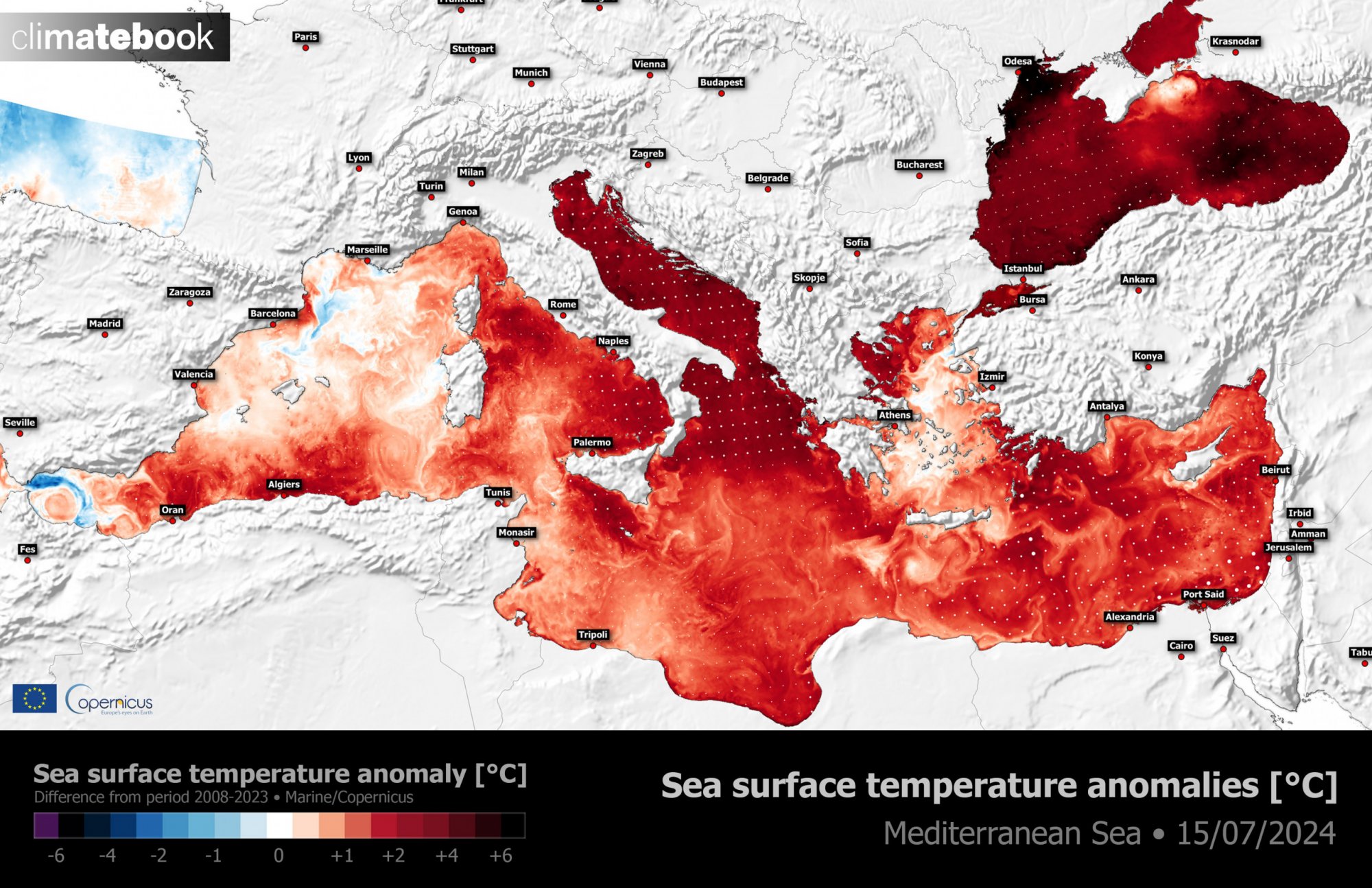The world continues to experience “extraordinarily high” temperatures, with record temperatures recorded on land and ocean surfaces, as scientists sound the alarm about climate change and global warming, noting that this crisis costs lives, deepens health inequalities and leads to the spread of disease-carrying parasites.
Now a study shows that the climate crisis is making every day longer… as melting polar ice reshapes the planet.
The change in day length is on the millisecond scale, but that’s enough to disrupt GPS navigation, online financial transactions and Internet operation.
This phenomenon is stark evidence of how human activities are changing the Earth, as they appear to compete with natural processes that have existed for billions of years.
Study shows melting polar ice caps are slowing our planet’s rotation, lengthening days at an ‘unprecedented’ rate ➡️ https://t.co/SkriqjysEm pic.twitter.com/KsCiIaSpjQ
– Agence France-Presse (@AFP) July 15, 2024
The change in day length is on the scale of milliseconds, according to research published in the Proceedings of the US National Academy of Sciences (PNAS). But that’s enough to potentially cause problems on the internet, in GPS-assisted navigation, and in electronic financial transactions. Procedures that depend on precise timing.
How the climate crisis is lengthening the day
The length of a day on Earth has been steadily increasing over geological time due to the Moon’s gravitational pull on our planet’s oceans and land.
However, the melting of the ice sheets in Greenland and Antarctica due to human-induced global warming has redistributed the water stored at higher latitudes into the world’s oceans. In practice, the amount of water in the seas is greater the closer you are to the equator. This makes the Earth more “tilted”—in degrees—which slows the planet’s rotation and lengthens the day even more.
The impact of human activity on the planet has also recently been demonstrated by research showing that the redistribution of water has caused the Earth’s axis of rotation – the North and South Poles – to shift. As reported by The Guardian.


Melting polar ice caps are reshaping the planet.
Other studies have shown that carbon emissions from human activities are shrinking the stratosphere.
“We can see our impact as humans on the entire Earth system, not just locally, like warming, but fundamentally, changing the way it moves through space and rotates,” commented Professor Benedikt Soja of ETH Zurich in Switzerland.
“Because of carbon emissions, we did this in just 100 or 200 years. Whereas similar changes previously would have taken billions of years, that’s impressive.”
Ramifications
Human timekeeping relies on individual clocks, which are very accurate. However, the exact time of day—one rotation of the Earth—varies due to lunar tides, climatic influences, and other factors, such as the slow recovery of the Earth’s crust after the retreat of ice sheets that formed during the last Ice Age.


Operations that depend on precise timing can be disrupted.
These differences need to be taken into account, Suga said: “All data centers that run the internet, communications, and transactions rely on precise financial timing. We also need precise timing for navigation, especially for satellites and spacecraft.”
The scientists involved in the study published in PNAS evaluated the effect of daytime ice melt. The rate of slowdown ranged from 0.3 to 1.0 milliseconds per century (milliseconds per year) between 1900 and 2000. But since 2000, as melting has accelerated, the rate of change has also accelerated to 1.3 mseconds per year.
“This rate is likely to be higher today than at any time in thousands of years,” the researchers said.
It is expected to remain at around 1.0 milliseconds per year for decades to come, even if greenhouse gas emissions are severely reduced.
If emissions are not reduced, the rate of slowdown will rise to 2.6 milliseconds per year by 2100, surpassing lunar tides as the single largest contributor to long-term changes in day length.
Global Warming – Very High Temperatures in the Mediterranean in July Too
The continuation of the very hot weather conditions of this season, both during the day and at night, in our country, and the successive heat recorded both on land and on the surface of the oceans, “screams” that there is something wrong and good.
According to the climate book, very high temperatures for this season are recorded in the Mediterranean in mid-July 2024 as well.


Sea surface temperature in the Mediterranean and Black Seas from satellite measurements on 15/07/2024. Data source: MARIN/Copernicus. Data processing and visualization: Climatebook.gr.
In the central and eastern regions of the basin, sea surface temperatures range from 29°C – 31°C, while deviations from seasonal normals locally exceed 6°C in the Adriatic Sea and 2-4°C in the southeast of the country. Relatively smaller but also strong deviations of sea temperature are recorded by satellites in the Ionian Sea area as well as in the Tyrrhenian Sea (up to 4°C), where the temperature ranges between 27-29°C.


Sea surface temperature deviations in the Mediterranean and Black Seas from satellite measurements on 15/07/2024. With white dots in hot sea areas, larger dots correspond to categories 2 and 3. Data source: Marine/Copernicus. Data processing and visualization: Climatebook.gr.
The only areas that record temperatures close to normal levels for this season are the Aegean Sea, where the beneficial effect of the melting keeps temperatures at around 24°C, and the western part of the Mediterranean (such as the Gulf of Blacks and the Balearic Islands), where temperatures are negative and temperature deviations are observed (around -1°C), also due to the influence of strong local northerly winds.





More Stories
In Greece Porsche 911 50th Anniversary – How much does it cost?
PS Plus: With a free Harry Potter game, the new season begins on the service
Sony set to unveil PS5 Pro before holiday season – Playstation